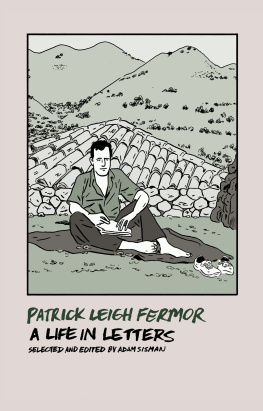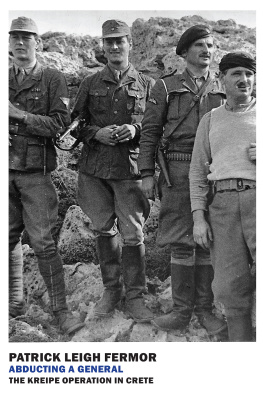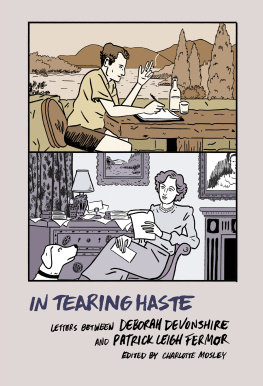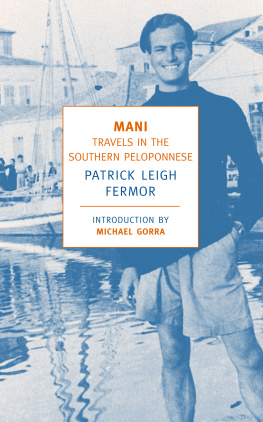PATRICK LEIGH FERMOR (19152011) was born of Anglo-Irish descent and raised in Northamptonshire and London. After his stormy schooldays, followed by the walk across Europe to Constantinople that begins in A Time of Gifts (1977) and continues through Between the Woods and the Water (1986), he lived and traveled in the Balkans and the Greek Archipelago. His books Mani (1958) and Roumeli (1966) attest to his deep interest in languages and remote places. In the Second World War he joined the Irish Guards, became a liaison officer in Albania, and fought in Greece and Crete. He was awarded the DSO and OBE. He lived until the end of his life in the house he designed with his wife Joan in an olive grove in the Mani. He was knighted in 2004 for his services to literature and to BritishGreek relations.
MICHAEL GORRAs books include The Bells in Their Silence: Travels Through Germany and After Empire. He is the Mary Augusta Jordan Professor of English at Smith College, and lives in Northampton, Massachusetts.
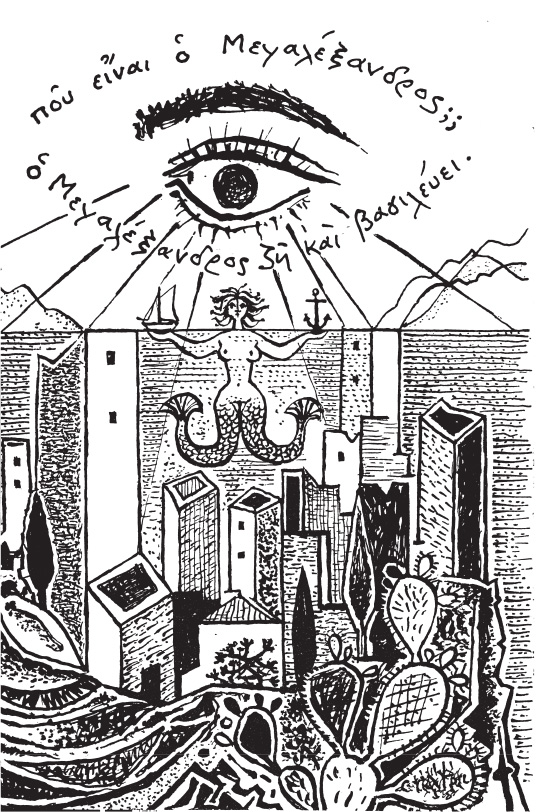
MANI
Travels in the Southern Peloponnese
PATRICK LEIGH FERMOR
Introduction by
MICHAEL GORRA

NEW YORK REVIEW BOOKS

New York
CONTENTS
INTRODUCTION
W E HAVE come down from the mountains to the shore, the hard part of the walk behind us, our legs stretched by the unattractively Alpine pitch of the hills, a long series of rib-cracking clinches with the sublime; our minds stretched as well by a tour through the world of the gorgon and the centaur, the ikon and the blood feud. Now we sit at rest aboard a caique steaming north up the Laconian gulf, with our journeythis booknear an end. But Manis host remains expansive, and announces that he shall fill the voyage with a digression on cats. So he notes the anatomical differences between the felines of Eastern Europe and the ribboned pussies of the West, and for good measureno digression can stay on pointdescribes the Turkish attitude to dogs. Then Patrick Leigh Fermor lifts into a sketch of his experiences with strange animals in Greece, complaining that he has never seen a wolf or a bear, and just a single wild boar. There might once have been a distant glimpse of...the mad, shy, fierce, the all-but-invisible and nearly extinct ibex of the White Mountains in Crete. And he has encountered a sea turtle, sculling steeply down into the blue-green depths between Bari and Corfu almost exactly at that point in the dotted line down the middle of the Adriatic where the filioque drops out of the Creed.
Its a throw-away sentence, and Leigh Fermor immediately moves on, as though dawdling at speed, to other maritime details, sharks and tuna and a great visitation of dolphins. That inconsequence, however, is precisely what draws me. First, the lovely gerund that defines the turtles motionthe beat of its flippers, the pause on the backstroke. Then that filioque, which at first seems to have nothing whatever to do with such beasts except that the writer happened to think of it. Yet the ease with which the turtle slips away reminds us of how little we ourselves can evade the past, and Leigh Fermor has an uncanny ability to find an historical marker on even the most featureless bit of this planets surface, to sail always over the ground of ancient contention. Or not so ancient: the schism between Rome and Byzantium occasioned by that bit of Latin does, after all, still hold.
In Leigh Fermors pages any account of the present begins a thousand years back, and to read him is to enter a mind that delights in bounding from moment to moment and century to century, a mind in which all times appear to exist at once. Not in Faulknerian confusionits instead as though they were each one indexed, and available for use. Nor does his conception of the past resemble the longue dure of Fernand Braudel, that sense of climate and geography as the motive forces of human history. Leigh Fermor never forgets the shaping force of landscape, but when he looks at a piece of groundof water, evenhe sees events, decisions, personalities, he sees battles and theology, paintings and poems and the movements of people; and all of it treated with the same familiarity with which you might grasp a favorite mug.
Anyone who reads this incomparable traveler will have his or her own private anthology of such moments. My own would include the view from the tower of Ulm Minster in A Time of Gifts (1977), Leigh Fermors account of the journey on foot, from Holland to Constantinople, that he began at the age of eighteen in 1933: a steeple-top vision that moves from the Black Forest to the whole upheaval of Switzerland and out over the Danube valley, in which everything from Hannibal to the swastika lies waiting. From Mani any such collection must contain that mist of impossible surmise in which Leigh Fermor allows himself to imagine that he has discovered the rightful Emperor of Byzantium in the form of an ouzo-swilling fisherman. But my favorite episode in the Greek travels recorded here comes just before the middle of this book, when at the southern tip of his wanderings he drops off the side of a boat and swims into the cave once known as Taenarus.
To the ancients it was an entrance to Hades, the place where Psyche came and Herakles too, and yet once inside Leigh Fermor finds something that none of the legends mention. For the caverns interior is all water, without a floor on which to rest your foot, and its bottom so measureless that for a few seconds it seems indeed as though he might be sucked below. It is a place he dare not stay. A few quick strokes carry him back out into the sun, where hes struck by how clear the daylight looked, and how bright the colours! And theres something wondrous in the way that, once back on land, he encounters a child with a lamb slung over her shoulders, and steps into the healing realm of pastoral.
Leigh Fermors first book, The Travellers Tree (1950), offered an account of the Caribbean that, in retrospect, seems a postwar attempt to step away from the history that provides his best subject. A novel followed, and then A Time to Keep Silence (1957), a beautiful but fragmentary chronicle of his visits to three very different monasteries. Mani (1958) stands as his first work of permanent value, and one of the few enduring travel narratives of its period. And yet the physical journey it records is a mere wisp, a week or so of walking through this eponymous region in the Peloponnese, and often enough the sound of footsteps fades out as these pages linger over such arcana as the Byzantine passion for strange hats.
Many of its details concern the peculiarities of the Mani itselfits villages of towers, its long resistance to Ottoman rulebut Leigh Fermor nevertheless draws his material from throughout the Greek world. For the book is but a shard of the one he meant to write, a volume that would chronicle a trip through all parts of Greece...a matter of countless bus-rides and long stretches on horseback and by mule and on foot. Once those travels were over, however, Leigh Fermor discovered that the resulting shelf of closely written notebooks looked so frighteningly long that he decided to avoid a thin spreading of the gathered material and instead to attack...in depth. Still, he is easily snared by the ramifying tendrils of digression that sprout around his every step, and neither


